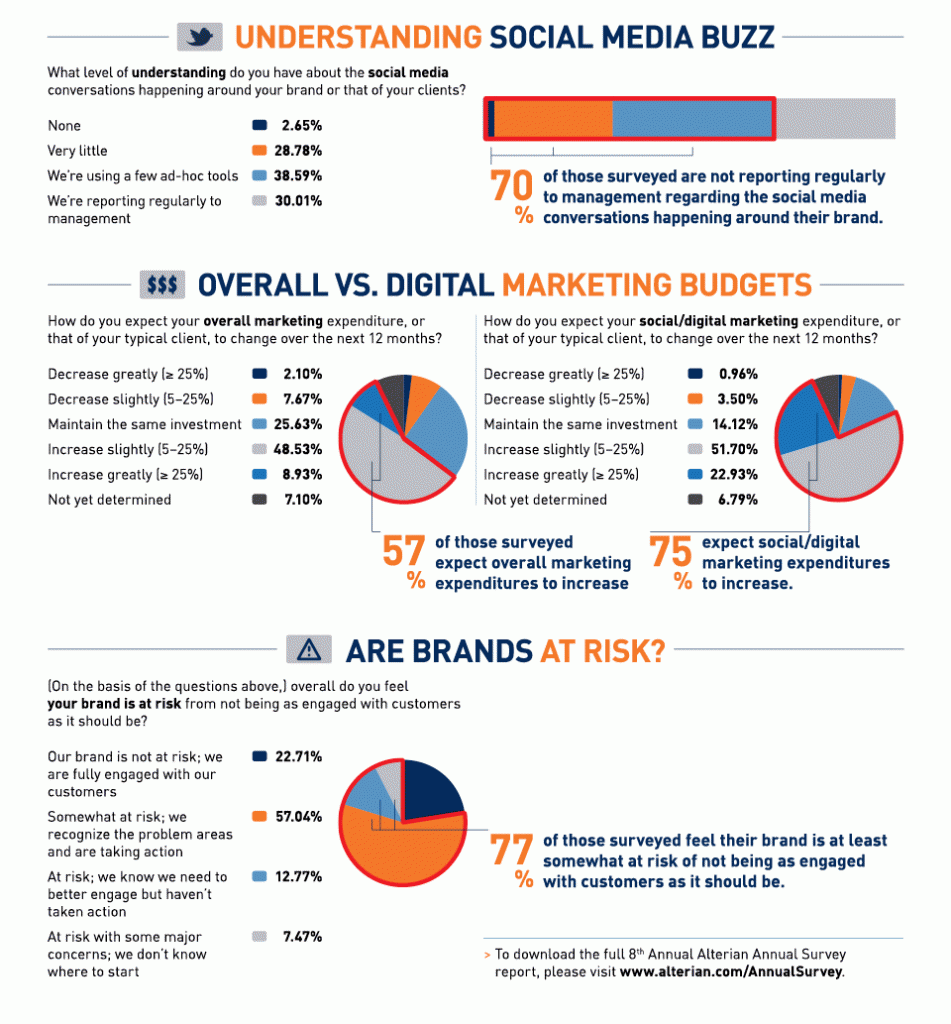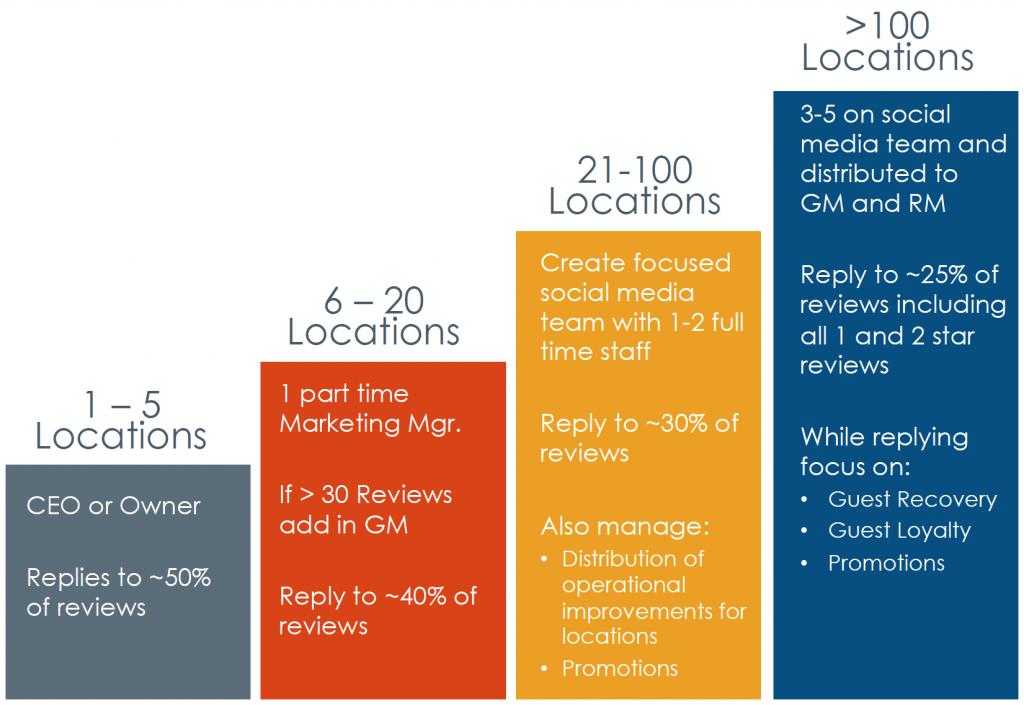Your online reputation matters, now more than ever. But you can impact that reputation in ways you never thought possible. Here are some of the reasons to pay attention to social feedback and how to effectively engage with reviewers to build lifelong brand advocates.
Social Engagement is Connecting
It’s simple, you just have to connect with people who post comments about you in social media sites. These people are your customers and they provide opinion, fact and detailed feedback about their interaction with you online. Contrary to popular belief, these people are not just teenagers or random people with an axe to grind, they are your customers.
Social Sites are Growing in Importance
As social site popularity grows, so should your awareness and understanding of your online reputation… Your prospective customers are on the prowl for every nugget of your online reputation.
Impact of Poor Online Reputation… Gone are the days when tweets, posts and opinions faded into the digital ether. With the surge of smartphone usage, people of all ages and social economic persuasions are using the information out there to decide about their next purchase. Your online reputation has the potential to kill your brand because people will change their mind, mid-buying cycle. You have to Listen and Act.
There is Real Value in Every Connection
Engaging with online reviewers allows you to uncover opportunities for operational improvement, increase customer loyalty, and improve your online reputation. Make no mistake about it, social media feedback can help you grow your business, perhaps in ways you never thought possible. You can glean details about your service, product or offering, your pricing and promotions. Yep, all that information is at your fingertips.
The Numbers Speak for Themselves…
85% of customers are very happy when businesses respond to their public comments in online forums and social media venues.
27% were “delighted” with a public response to their social feedback.
34% deleted their original negative review after being engaged.
Follow four simple steps to improved reputation
- Listen to all reviews from all social sites, review sites, blog posts and any other digital source.
- Target social reviews based on author influence and reach, review star rating, and keywords used in the review.
- Connect with the reviewer as fast as possible and use the best practices we spell out below.
- Watch your star ratings increase and your location’s online influence grow.
5 Engagement Best Practices
1. Marketing Sanctioned, 1 Brand Aware
Responses should mirror brand image and voice. Ensure that everyone authorized to reply to posts understands your brand voice and be sure to refresh the team as your brand voice changes. Create and distribute brand-voice guidelines. Provide a standard structure and keep your replies consistent. For example, ensure you end with a standard email for customer service and signature of replier including title. Do not copy and paste replies, rather, customize the reply to each reviewer by keying off the core messages in their review.
2. Don’t Take it Personally
Keep calm and think practically. Avoid knee jerk reactions. If you have to, give yourself a time-out before replying. Research with others before replying. Remember, customers don’t usually lie but they do embellish. Find out the details so you can address concerns confidently. Take the high road, don’t defend yourself and remember a heart felt apology never hurt anyone. As with all business, keep religion and politics out of it. This is about your company and product, not your social beliefs.
3. Target both Positive and Negative Reviews
NEGATIVE
- Apologize
- Reference the situation and commit to improve
- Offer help or ask what you can do for them
POSITIVE
- Remind your brand advocates that you’re listening
- Tell them something they didn’t know
- Invite them back
IN BOTH CASES
- Respond quickly, within the day if possible
- Be thankful for their feedback, every situation is a learning experience
- Reply on the public review site, but take the conversation to a designated email address that’s monitored by more than one person
Remember the “Golden Rule,” treat others as you would like to be treated!
4. Don’t just Talk…Act
Make sure you aren’t just paying lip service to the customers with whom you engage. You Must Follow Through!
First, pass the information onto the people who can make a difference in your business. Get it to the regional and general managers and their leadership teams and empower them to fix the issues quickly.
Next, encourage GM’s to use the information in pre-shift meetings for long term improvement. Reward staff whose efforts yield amazing customer service with monetary gifts and team-wide recognition. Consider creating a social media Hall of Fame or provide incentives for staff mentions: gift cards, shift priorities, time off, priority parking, and so on.
5. Measure your Progress
Ensure you keep track of engagement replies including who replied, reply date, and actual reply content. This is valuable for audit and training purposes.
Give yourself targets for engagement defined as numbers or percentage of total reviews. Some examples of goals include:
- % of reviews engaged: shoot for engaging with 50% of all online reviewers, even tweets
- % of engaged customers who reply: monitor how many customers reply to your outreach
- % of engaged customers who return: use your loyalty program and customer relationship management (CRM) platform to track customer return rates
- % who re-evaluate and repost reviews: give yourself bonus points for reviewers who change online reviews due to your efforts
Grow Your Efforts As You Grow
Next you might wonder how to size your social media efforts. Keep it in proportion to your business and your online presence. As you grow, increase your outbound engagement, and distribute the workload after proper social media training.
Reviews about your business are out there, it’s imperative that you listen, respond and fix the issues before they recur. Plan a time, even if only a few minutes a week, to reply to social media reviews using these best practices. Ensure you size your team and efforts to expand as you grow.
































